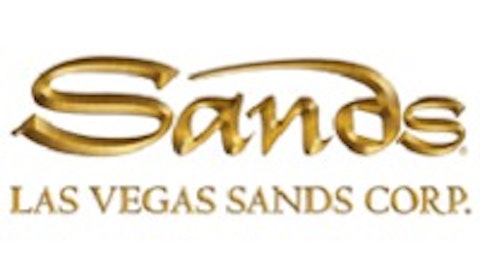With the recent announcement that the deal had received an all-important blessing from the Nevada Gaming Commission, the $870 million proposed merger between Pinnacle Entertainment, Inc (NYSE:PNK) and Ameristar Casinos, Inc. (NASDAQ:ASCA) is now much more likely to go through as planned. As one of the largest recent consolidation moves in the tepid gaming industry, this merger offers some important synergies and may provide investors with a powerful profit opportunity.

If no other obstacles arise to scuttle or delay this deal, it could be completed by the end of the third quarter of 2013. However, it is important to note that the merger is subject to federal regulatory approval, as well as approval from four other state gaming commissions. While there is no indication that any of the ongoing reviews will pose a problem, investors should carefully monitor all of the news reports that relate to the merger.
Those who wish to play this deal may be interested to know how Pinnacle and Ameristar compare with others in the gaming industry. Like the two merging firms, Boyd Gaming Corporation (NYSE:BYD) is based in Las Vegas and manages a nationwide portfolio of casinos and entertainment properties.
With respective market capitalization figures of $1.2 and $1.1 billion, Pinnacle Entertainment, Inc (NYSE:PNK) and Boyd Gaming Corporation (NYSE:BYD) are nearly identical in size. With a current valuation of around $870 million, Ameristar Casinos, Inc. (NASDAQ:ASCA) is a bit smaller. Of the three firms, Ameristar is the only company that is currently profitable. Its 2012 profit margin of 4.5 percent comes on the strength of $1.2 billion in revenues. By comparison, Pinnacle Entertainment, Inc (NYSE:PNK) posted a loss of about $108 million on revenues of just over $1.2 billion. Boyd suffered a wide loss of $922 million on revenues of about $2.6 billion.
Cash-wise, the three companies are not in excellent shape. For its part, Pinnacle Entertainment, Inc (NYSE:PNK) has about $100 million in cash and nearly $1.5 billion in debt. Ameristar Casinos, Inc. (NASDAQ:ASCA) has about $125 million in cash to about $2 billion in debt. Boyd struggles with a debt load of $4.8 billion and a cash reserve of just under $360 million. If there is any solace to be gained from these depressing figures, it is that none of these companies looks like a great investment relative to the others.
How the Deal Is Structured
Under the terms of the deal, Pinnacle Entertainment, Inc (NYSE:PNK) will issue cash payments of $26.50 per share to Ameristar Casinos, Inc. (NASDAQ:ASCA) shareholders of record as of an undetermined record date. Although this represented a premium of nearly 45 percent over Ameristar Casinos, Inc. (NASDAQ:ASCA)’s pre-announcement closing price, there is currently no significant arbitrage premium for this deal. This is probably due to the general consensus that it will receive speedy regulatory approval.
It is important to point out that Pinnacle’s unfavorable debt situation could prove to be problematic in the long term. Since this acquisition will need to be financed primarily through debt issues, it could act as a long-term drag on the combined company’s balance sheet.
Important Synergies to Note
In spite of these debt problems, it is clear that this deal offers some exciting synergies. According to the Ameristar press release on the transaction, the deal is expected to produce at least $40 million in annual cost savings through redundancies and various economies of scale at individual gaming facilities. The release goes on to note that this estimate could prove to be conservative.
There may be other benefits. The combined company will have a more comprehensive geographic reach than either of its individual components, and the deal itself is likely to have a positive effect on earnings margins and cash flow metrics within months of its closing. In the long run, the companies’ respective management teams clearly hope that this will reduce the severity of the combined firm’s balance sheet deficiencies.

